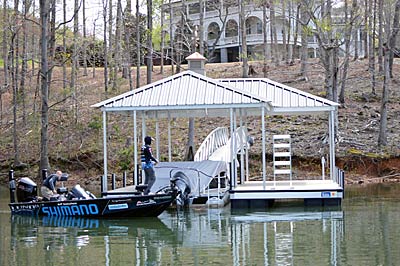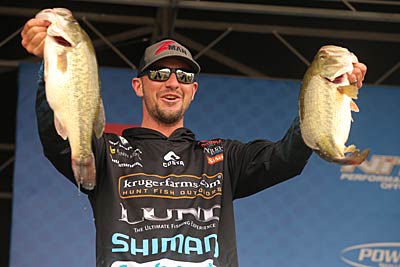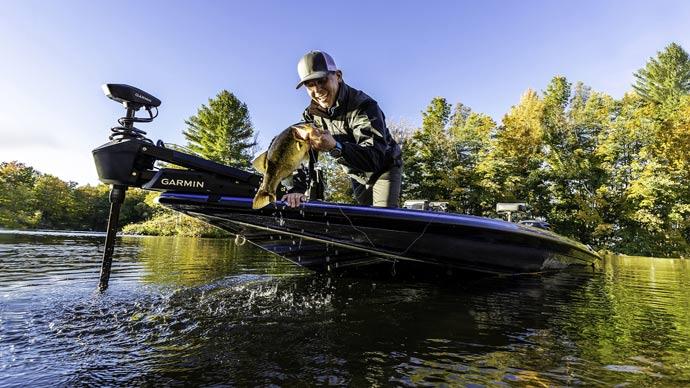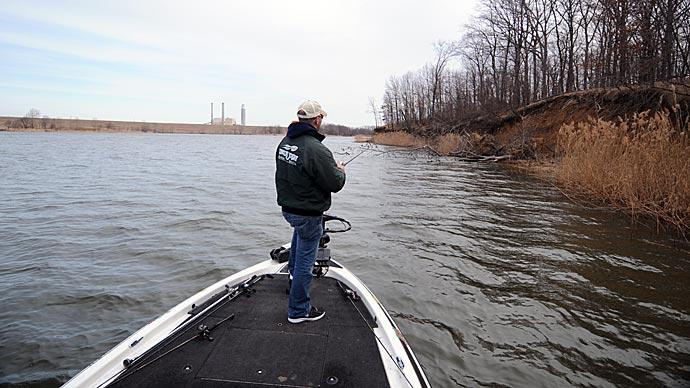
Except for a few tweaks to mounts, pedals, and pounds of thrust, trolling motors hadn’t changed much in many years. That changed in 2016 when Minn Kota introduced Ultrex. Bass anglers immediately saw its advantages, especially the ability to hold a boat in one position — regardless of wind, waves, or current — all by itself.
Fast forward three years and the annual ICAST sportfishing trade show became a coming-out party for a new generation of trolling motors. Garmin, Lowrance, and Motor Guide joined Minn Kota, introducing trolling motors that feature new technology such as more powerful and efficient motors and integrated electronics. While they all take slightly different routes, their destination is the same — better bass fishing.
But these trolling motors come with one more thing, a hefty price increase over the traditional cable-steer trolling motors that have been standard equipment on bass boats for decades. So, before anglers fork over their hard-earned cash, they want to know how they’ll help them, especially if they haven’t witnessed one in action yet. Is the extra expense and hassle of updating worth it? According to Bassmaster Elite Series angler Jeff Gustafson, the answer is yes. “When the Ultrex came out a few years ago, it was the most game-changing piece of equipment I have seen come along,” he said. Here’s how it and the other new-generation trolling motors are doing just that.
Hold over deep water
Gustafson has used an Ultrex since its introduction. While it has unique features, many of its tasks resemble the other new-generation trolling motors. And their most significant benefit is their ability to hold a boat in one spot, freeing up its user to concentrate on fishing. “As someone who prefers to fish offshore, does some guiding where I have to take photos of fish and bait hooks, the Spot-Lock function is such a huge help,” he said. “I couldn't fish for a living without this motor.”

Once Gustafson tells his trolling motor to lock onto a spot, his boat stays there. “It’s super accurate,” he said. But a little help doesn’t hurt. “The key is to stop or slow the boat as much as you can before you hit the button to lock down,” he said. “If you are cruising along, it has to work harder to find the exact spot.”
The new generation trolling motors’ ability to remain in one spot becomes less helpful the shallower you fish. Gustafson still relies on his shallow-water anchors anytime the water is less than 10 feet deep. They also are invaluable when fishing-specific shallow-water targets at close range, such as stalking bedding bass or skipping lures under docks, when the whirl of a trolling motor can spook bass. “If I’m fishing shallow water, I like to use my Talons more than the Ultrex to keep me sneaky,” he said. “They are ultra-quiet, and they hold so well. In heavy wind, I sometimes drop the Talons then use the trolling motor to keep from moving around.”
Surge through the shallows
Bass anglers are on the move when fishing shallow water, going from one piece of cover or structure to the next without missing a cast. They need a responsive trolling motor that turns their boat quickly, creating the best casting angles. Traditional cable-steer trolling motors excel here. Any pressure on the foot pedal was instantly reflected in the motor, allowing anglers to zip around the cover. While MotorGuide engineers found a way to preserve that technology in the Tour Pro and add its Pinpoint GPS navigation, don’t dismiss the other new-generation motors that use “fly-by-wire” technology, Gustafson said.
Minn Kota’s Ultrex, for example, was designed to act like a traditional cable-steer trolling motor. “That makes it super fast and responsive, so if you’re covering shallow water, it’s straightforward to maneuver and use,” Gustafson said. “I haven’t used any other motors, but the Ultrex steers faster than any motor I have ever used. It took me about two hours to get used to it the first day I fished with it.”
Gustafson’s trolling motor can steer itself. After aiming it, he’ll engage the AutoPilot function, which tells the trolling motor to follow the current heading continuously. It takes care of getting him to the next spot, whether across a cove or creek, while he attends to his tackle, rods, or other tasks. “This trolling motor will make you a more efficient angler no matter how you like to fish,” he said.
More powerful pedals
Introduce yourself to the pedal on each of these trolling motors. Many of their new functions are controlled here. On Lowrance’s Ghost trolling motor, for example, the pedal can be programmed to accommodate using your left or right foot, and two buttons can be assigned functions, making tasks, such as dropping a waypoint or taking a screenshot of the sonar, just a toe tap away.

Gustafson said the Ultrex’s pedal is function filled, too. “The Ultrex is dialed right out of the box, so no adjustments are needed. [The pedal feels] slightly stiffer [than a traditional cable steer trolling motor], but that keeps it from wandering like the old-style motors if your foot wasn’t on it.”
Garmin went an extra step with its Force Trolling Motor’s foot pedal. While it also has the feel of a traditional cable-steer trolling motor, it can control the motor through a hard-wire or wireless connection. That means you can use it anywhere in your boat. It also has a handheld remote, which directs the Force to turn whichever way it’s pointed.
Plugged in
One of the big pluses of the new generation trolling motors is how well they play with electronics, though some brands favor their graphs. Most host transducers, or at the least, make it easy to attach them. Garmin’s Force, for example, connects wirelessly to electronics.
Gustafson said integrating a Down-Imaging transducer into the Ultrex was a big step forward. “As an angler who likes to fish vertically and watch for fish on my screen, I found the DI function very useful in distinguishing things I was seeing on my screen,” he said. “I was amazed at how many things I used to drop baits on that I thought were fish. With it up front, I could tell what a stick or branch was and what was a fish.” And many times, he could estimate its size and whether or not it was a bass.
One thing you won’t need are new batteries. Gustafson uses quality deep-cycle batteries. “These batteries work well with traditional plug-in chargers,” he said. “They charge quickly, and I don’t need to carry around a bunch of different chargers.”
Efficiency is one more trait of these new trolling motors. Gustafson said he could go two days of full-throttle fishing without recharging. MotorGuide says its Tour Pro is 30 percent more efficient and more powerful thanks to its specially designed Katana prop.
If you’re stuck between getting a 24- or 36-volt trolling motor, Lowrance’s Ghost offers an answer. Its engineers designed it to operate with two or three 12-volt batteries. So, if you’re using two and want more thrust, wire in a third battery, and it will automatically up its performance. That saves from purchasing a 36-volt trolling motor, the only option for more power with traditional models.




